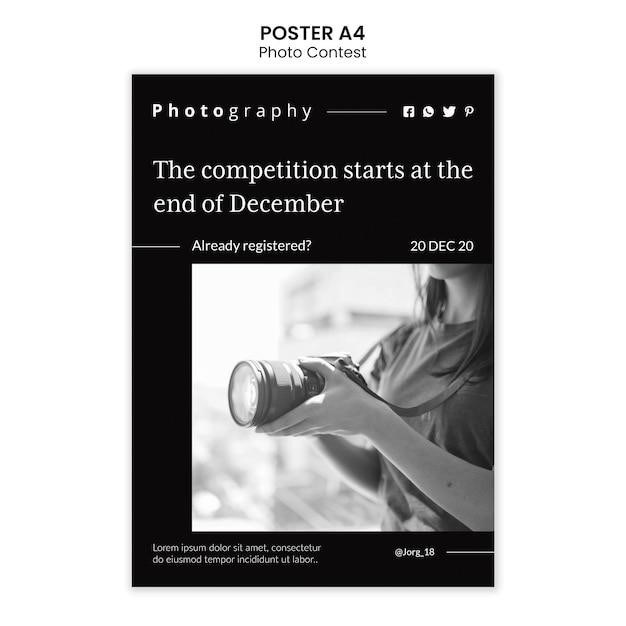Bates Pocket Guide to Physical Examination⁚ An Essential Guide for Medical Professionals
The Bates Pocket Guide to Physical Examination and History Taking is a widely recognized and trusted resource for medical professionals. It provides a concise and practical approach to performing patient interviews, physical examinations, and interpreting findings. The guide is renowned for its comprehensive coverage, clear explanations, and step-by-step instructions, making it an invaluable tool for students, residents, and practicing physicians.
Introduction
The art and science of physical examination are fundamental to the practice of medicine. It is through a meticulous and systematic evaluation of a patient’s physical presentation that clinicians gather crucial information to diagnose, treat, and manage various health conditions. The Bates Pocket Guide to Physical Examination and History Taking has emerged as an indispensable companion for medical professionals seeking to master these essential skills. This pocket-sized guide, now in its ninth edition, stands as a testament to its enduring relevance and the ever-evolving landscape of medical practice. It provides a comprehensive and accessible framework for conducting patient interviews, performing physical examinations, and interpreting findings, all within a concise and portable format. The guide’s enduring popularity stems from its ability to bridge the gap between theoretical knowledge and practical application, empowering healthcare providers to confidently navigate the complexities of patient care.

The History of Bates Pocket Guide
The Bates Pocket Guide to Physical Examination and History Taking traces its roots back to the 1970s, a time when medical education was undergoing significant transformations. Dr. Barbara Bates, a renowned physician and educator, recognized the need for a concise and accessible guide that would empower medical students and practitioners to confidently perform physical examinations. Her vision was to create a resource that would bridge the gap between theoretical knowledge and practical application, making the process of physical examination more intuitive and efficient. The first edition of the Bates Pocket Guide was published in 1974, and it quickly gained popularity among medical students and residents. Over the years, the guide has undergone numerous revisions and updates, reflecting advancements in medical knowledge and practice. Each new edition has incorporated the latest research, clinical guidelines, and best practices, ensuring that the Bates Pocket Guide remains a relevant and authoritative resource for medical professionals. The guide’s enduring legacy is a testament to its enduring value and its ability to adapt to the evolving needs of the medical community.
Key Features of Bates Pocket Guide
The Bates Pocket Guide is renowned for its distinctive features that cater to the needs of medical professionals. Its pocket-sized format makes it highly portable, allowing for quick reference during patient encounters. The guide’s clear and concise writing style ensures that information is easily understood and retained. Its step-by-step approach to physical examination techniques provides a structured framework for conducting thorough assessments. The guide is enriched with numerous illustrations and photographs that visually demonstrate key techniques and anatomical landmarks, enhancing comprehension and retention. The Bates Pocket Guide also includes a comprehensive section on patient interview and history taking, recognizing the crucial role of communication in establishing a diagnosis. Furthermore, the guide addresses common findings during physical examination, providing insights into their interpretation and significance. The Bates Pocket Guide is regularly updated to reflect the latest medical knowledge and guidelines, ensuring its relevance and accuracy. These features make the Bates Pocket Guide an indispensable resource for medical students, residents, and practicing physicians, empowering them to perform accurate and effective physical examinations with confidence.
Patient Interview and History Taking
The Bates Pocket Guide places significant emphasis on the patient interview and history taking, acknowledging their fundamental role in establishing a diagnosis. The guide provides detailed guidance on conducting a thorough patient interview, covering essential elements such as the chief complaint, history of present illness, past medical history, family history, social history, and review of systems. It highlights the importance of active listening, empathy, and open-ended questions in eliciting comprehensive patient information. The guide also emphasizes the need for clear communication and documentation to ensure accurate record-keeping and facilitate effective patient care. Furthermore, it provides practical advice on handling challenging situations, such as patients with limited English proficiency, cultural differences, or emotional distress. The Bates Pocket Guide’s comprehensive approach to patient interview and history taking equips medical professionals with the skills and knowledge to build strong patient-physician relationships and gather the necessary information for accurate diagnoses and treatment plans.
Physical Examination Techniques
The Bates Pocket Guide excels in its detailed explanations of physical examination techniques, providing clear, concise instructions and illustrative diagrams for each step. The guide covers a wide range of techniques, including inspection, palpation, percussion, and auscultation, emphasizing the importance of a systematic approach to ensure thoroughness. It provides guidance on appropriate equipment use, such as the stethoscope, ophthalmoscope, and otoscope, and offers tips for maximizing accuracy and precision in each technique. The guide also addresses common challenges encountered during physical examinations, such as patient positioning, handling sensitive areas, and adapting techniques for different age groups. Furthermore, it includes practical advice on interpreting findings, recognizing normal variations, and identifying potential abnormalities. The Bates Pocket Guide’s meticulous attention to detail in describing physical examination techniques empowers medical professionals to conduct efficient and effective assessments, leading to more accurate diagnoses and informed treatment decisions.
Common Findings and Interpretation
The Bates Pocket Guide is a valuable resource for understanding and interpreting common physical examination findings. It provides detailed descriptions of normal variations and potential abnormalities, along with clear explanations of their significance in different clinical contexts. The guide covers a wide range of physical examination findings, from basic observations like skin color and texture to more complex assessments of organ systems, such as the cardiovascular, respiratory, and neurological systems. It includes numerous illustrations and photographs to aid in visualization and identification of key findings. The guide also emphasizes the importance of considering the patient’s overall health history, including their age, gender, ethnicity, and lifestyle factors, when interpreting examination results. By providing a comprehensive overview of common findings and their potential implications, the Bates Pocket Guide equips medical professionals with the knowledge and skills to make informed clinical judgments and develop appropriate treatment plans.
Applications in Various Medical Fields
The Bates Pocket Guide to Physical Examination and History Taking is a versatile resource that finds applications in various medical fields. It is an essential tool for medical students, residents, and practicing physicians across diverse specialties. In primary care, the guide helps clinicians conduct comprehensive patient assessments, identify potential health concerns, and develop appropriate treatment plans. In specialties like cardiology, pulmonology, and neurology, the guide provides specific guidance on performing focused physical examinations relevant to each field. The guide is also valuable for nurses, physician assistants, and other healthcare professionals who conduct physical examinations as part of their patient care responsibilities. Its concise format and practical approach make it a convenient and readily accessible reference for healthcare professionals in various settings, including hospitals, clinics, and private practices.
Bates Pocket Guide in Medical Education
The Bates Pocket Guide to Physical Examination and History Taking plays a crucial role in medical education. It serves as a cornerstone resource for medical students learning the fundamentals of physical examination and patient assessment. Its clear and concise explanations, along with detailed illustrations, make it an ideal tool for students to grasp complex concepts and develop practical skills. The guide’s focus on evidence-based practices ensures that students are equipped with the latest knowledge and techniques. It also provides a framework for students to develop a systematic approach to patient care, fostering critical thinking and clinical reasoning skills. Medical schools and residency programs widely recommend and utilize the Bates Pocket Guide, integrating it into their curricula and clinical training programs. Its portability and accessibility make it a convenient companion for students during lectures, clinical rotations, and patient encounters.
The Bates Pocket Guide to Physical Examination and History Taking stands as a cornerstone resource for medical professionals, encompassing a comprehensive approach to patient assessment. Its enduring popularity stems from its concise, practical, and authoritative guidance. Whether serving as a first-time guide for students or a reliable companion for experienced clinicians, Bates remains an invaluable tool for conducting accurate, efficient, and effective physical examinations. The guide’s commitment to evidence-based practices ensures that its content remains relevant and up-to-date, reflecting the ever-evolving landscape of medicine. Its continued relevance and widespread adoption in medical education underscore its significance as an essential resource for shaping the next generation of healthcare providers. The Bates Pocket Guide serves as a testament to the importance of meticulous physical examination as a cornerstone of patient care, empowering medical professionals to deliver high-quality and compassionate healthcare.
References
Bickley, Lynn S., et al. Bates Pocket Guide to Physical Examination and History Taking. Wolters Kluwer, 2020.
Bates Pocket Guide to Physical Examination and History Taking, 9th ed. medpublishing.ru. Accessed November 17, 2020.
Bates Guide to Physical Examination and History Taking. Amazon.com. Accessed November 17, 2020.
Bates Pocket Guide to Physical Examination and History Taking. Lippincott Connect. Accessed November 17, 2020.
Bates Pocket Guide to Physical Examination and History Taking. Ubuy Russia. Accessed November 17, 2020.
Bates Pocket Guide to Physical Examination and History Taking. Amazon.com.be. Accessed November 17, 2020;
Bates Pocket Guide to Physical Examination and History Taking. Wolters Kluwer. Accessed November 17, 2020.
Bates Pocket Guide to Physical Examination and History Taking. Amazon.com. Accessed November 17, 2020.
Bates Pocket Guide to Physical Examination and History Taking. Goodreads.com. Accessed November 17, 2020.


